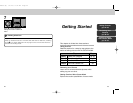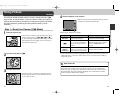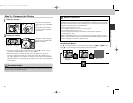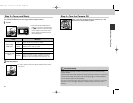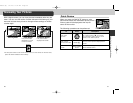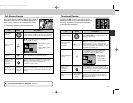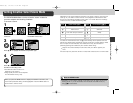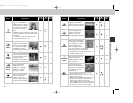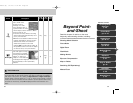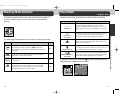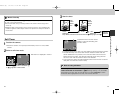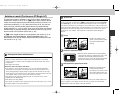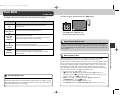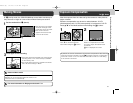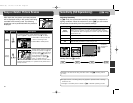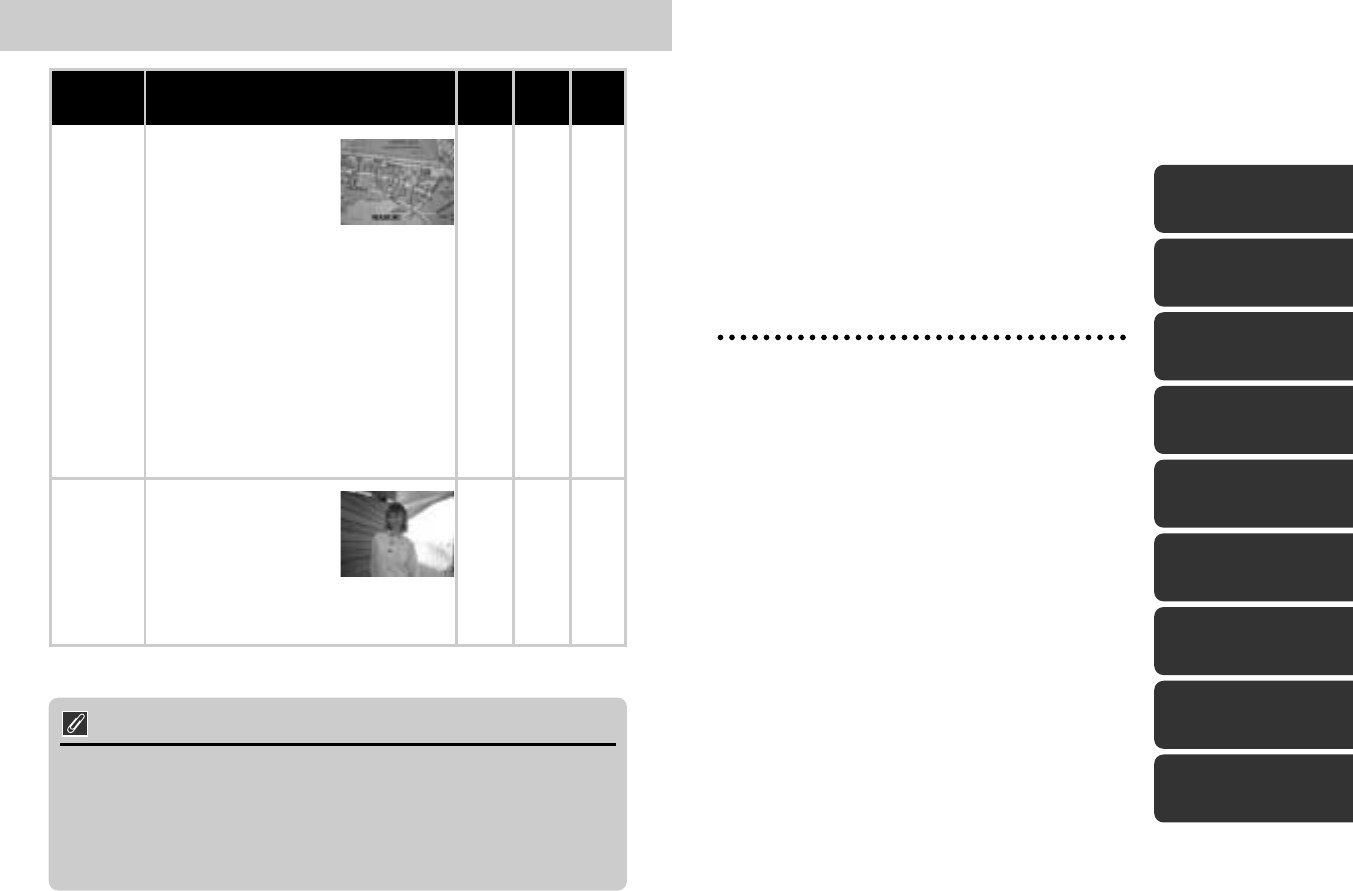
39
Beyond Point-
and-Shoot
Read this chapter for advice on the most
frequently-used shooting controls, including:
Shooting-Mode Selection
Focus Mode
Digital Zoom
Flash Mode
Making Movies
Exposure Compensation
Keep or Delete
Sensitivity (ISO Equivalency)
Manual Focus
Shooting-Mode
Selection
p. 40
Focus Mode
pp. 41-45
Digital Zoom
pp. 46-47
Flash Mode
pp. 48-49
Making Movies
p. 50
Exposure
Compensation
p. 51
Keep or Delete
pp. 52
Sensitivity
(ISO Equivalency)
p. 53
Manual Focus
p. 54
Camera Controls
38
Scene
x
Copy
c
Back Light
Description
Use to obtain clear
pictures of text or
drawings on a white
board, business card, or
in printed matter. To shoot
a close subject, set the camera to Macro
close-up mode (p. 42).
• In autofocus mode, minimum shooting
distance becomes approximately 70cm
(2.3 ft.) from the lens.
• Minimum focus distance varies with zoom
position. When Macro close-up mode is
selected and camera is zoomed in to
widest zoom position, focus mode
indicator (™) in monitor will turn yellow. At
this position, camera can focus on objects
as close as 4cm (1.6 in.) from the lens.
Use when light is coming
from behind your subject,
throwing their features into
shadow, or when your
subject is in the shade but
the background is brightly lit. The flash will
fire automatically to “fill in” (illuminate)
shadows.
3
(p. 48)
Any
O
2
(p. 41)
Any
Auto,
0
Camera
shake
—
—
Noise Reduction
“Noise” in the form of randomly-spaced, brightly-colored pixels tends to appear
in pictures taken at slow shutter speeds. This effect is particularly noticeable in
dark areas of the picture. At a setting of Night Portrait and Night Landscape,
pictures taken at shutter speeds of 1/4 sec. or slower are processed to reduce
noise (note that this increases the time needed to process pictures before they
are saved to the memory card). NR is displayed when noise reduction is in
effect.
E4300 (E) 02.12.9 1:47 PM Page 38



